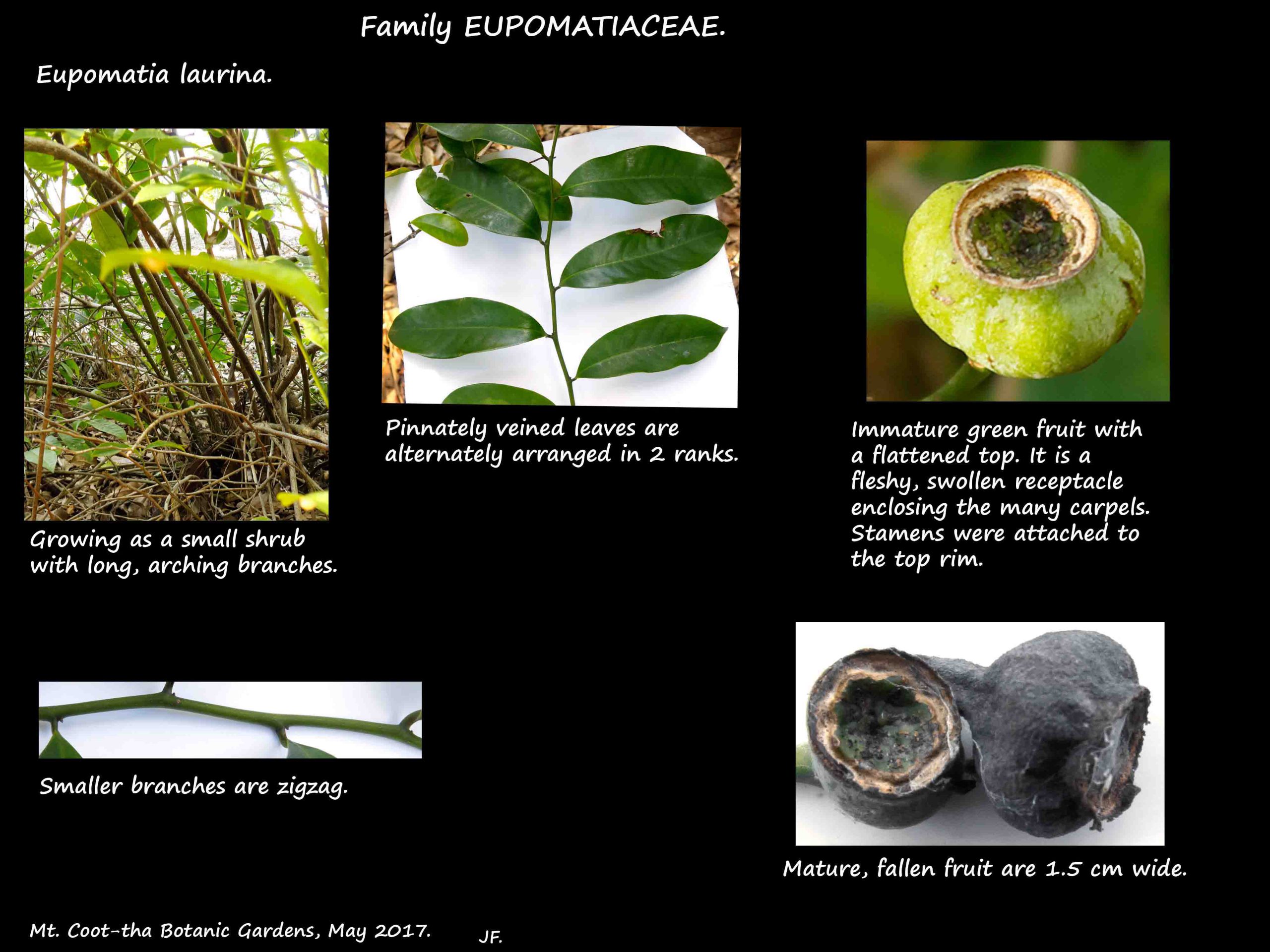Eupomatia laurina – Copper Laurel.
Family Euopmatiaceae is a basal angiosperm family in the Order Magnoliales and a sister to the Annonaceae.
Eupomatia is the only genus and there are 3 species – E. laurina occur naturally in Eastern Australia
and 2 other species are found in very restricted areas.
Eupomatia laurina grow as shrubs or small trees commonly up to 5 m but can be much taller.
The branchlets zigzag and twigs have white spots – lenticels.
The shiny leaves are alternately arranged in 2 ranks (distichous).
There are no stipules.
The stalked leaves, 10 to 20 cm long, are pinnately veined.
Plants have both male and female flowers.
The pale cream flowers are solitary or in groups of 2 or 3.
Each initially has a conical lid-like bract or calyptra which falls as the flower grows.
Flowers are up to 25 mm across and have no petals or sepals.
There are many spirally arranged stamens on the edge of the tubular receptacle (upper part of the flower stalk).
They have wide, flat petaloid filaments and at first glance can resemble small petals.
The basifixed anthers open outwards via longitudinal slits.
There is a small tail-like appendage at the top.
Some of the inner stamens are infertile staminodes.
The broad receptacle holds from 13 up to nearly 70 closely packed carpels.
They are spirally arranged and sometimes their basal parts are fused.
There is no style with a stigma sitting on the top of each carpel.
Each carpel has about 3 ovules.
The fruit, 2 to 4 cm across, is an aggregate of carpels in a fleshy receptacle with a flat top.
The inside resembles a guava.
J.F.


